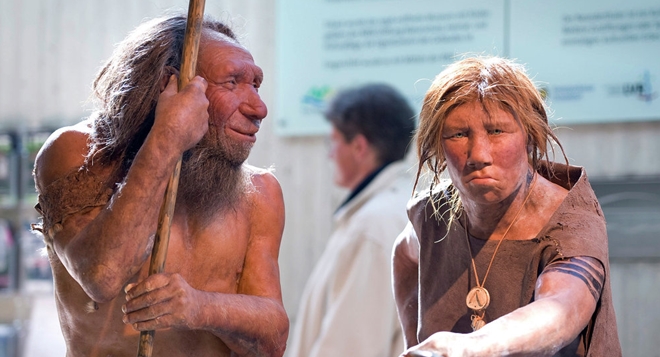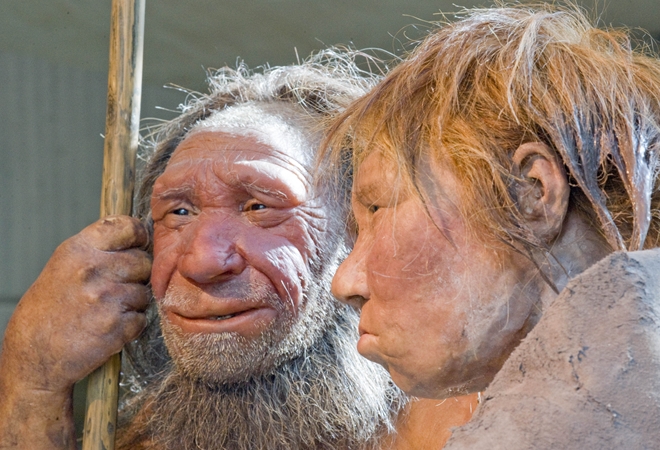Earth's first artists were Neanderthals
A joint study between the University of Southampton, Durham University and the Max Planck Institute for Evolutionary Anthropology has discovered the first evidence of sophisticated artwork created by Neanderthals more than 60,000 years ago.
 |
| The prehistoric Neanderthal man "N", left, is visited for the first time by another reconstruction of a homo neanderthalensis called "Wilma", right, at the Neanderthal museum in Mettmann, Germany, Friday, March 20, 2009. Photo: Sputnik |
Researchers concentrated their efforts on the study of cave paintings in Spain dating at least 20,000 years before Homo Sapiens or modern humans arrived in Europe. The paintings, featuring intricate depictions of animals, plant life and, crucially, dotted and geometric patterns, signifying that Neanderthals were capable of higher, symbolic levels of thought similar to Homo Sapiens.
The findings have lead scientists to believe that many ornamental artefacts recovered from the Ice Age or Upper Palaeolithic Period which have been attributed to human craftsmanship may have been the result of cross-cultural influence with much older pre-existing Neanderthal communities.
 |
Neanderthals were once widely dispersed across Europe and Asia but were driven to extinction during the last Ice Age, beginning around the time of the arrival of modern humans in Europe 40,000 years ago. While often considered to have been less intelligent than their surviving cousins, they displayed evidence of complex social structures and even religious beliefs and practices, burying their dead in ritual poses and decorating them with flowers.
Modern Europeans are also known to possess the highest proportion of Neanderthal DNA due to limited degrees on interbreeding between them and early Homo Sapiens.

